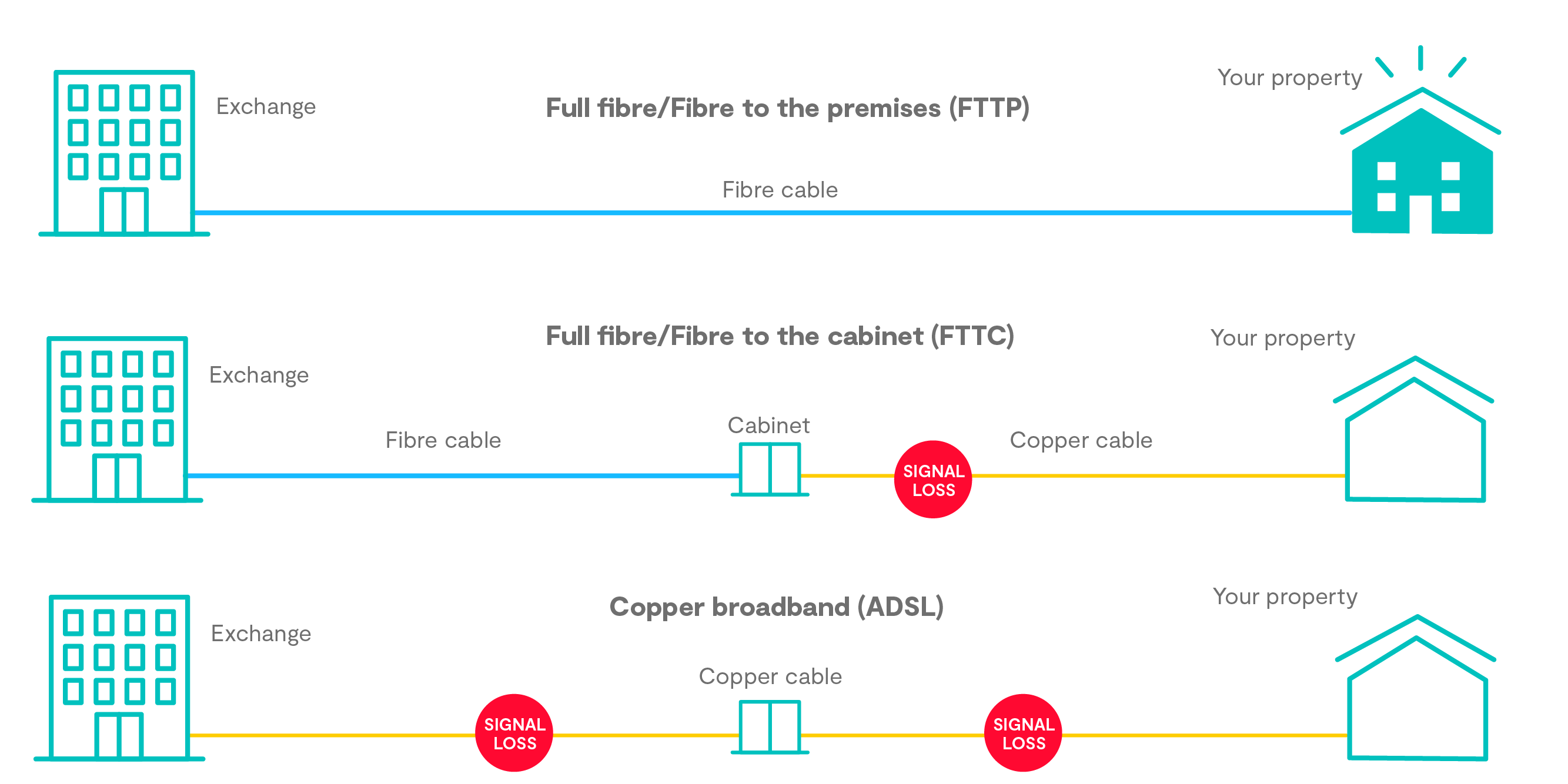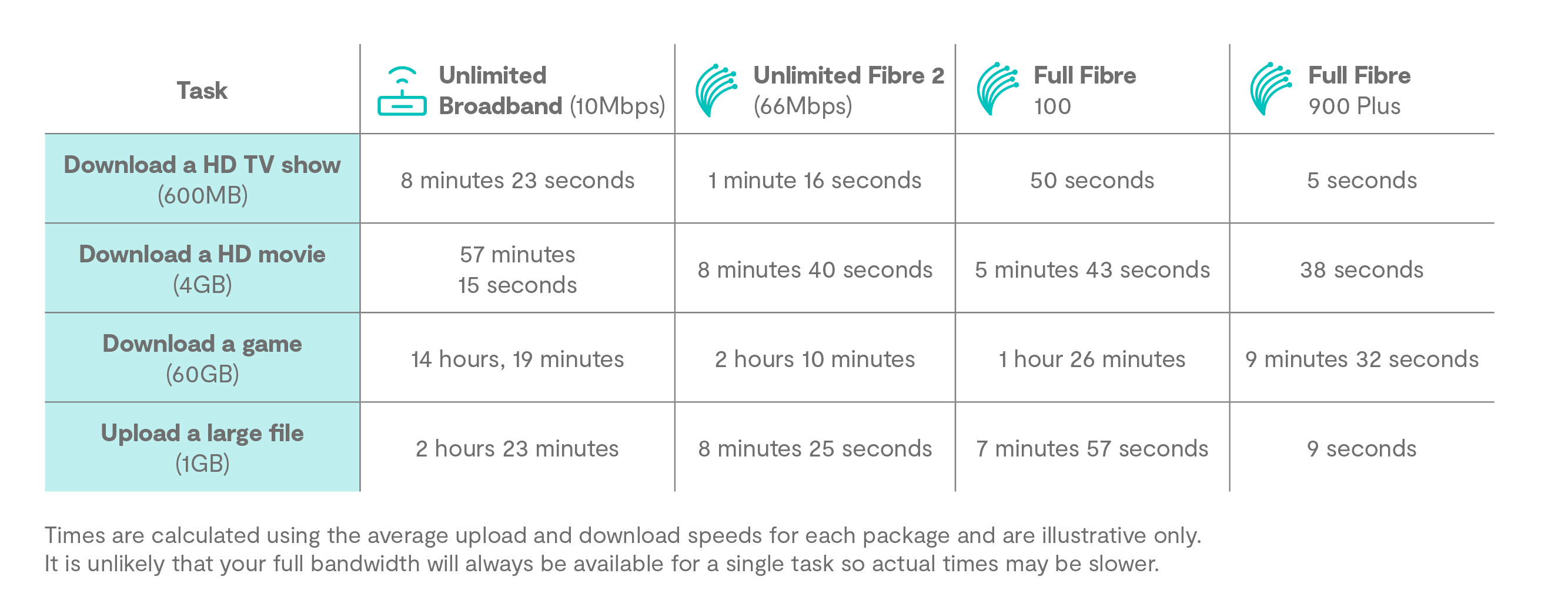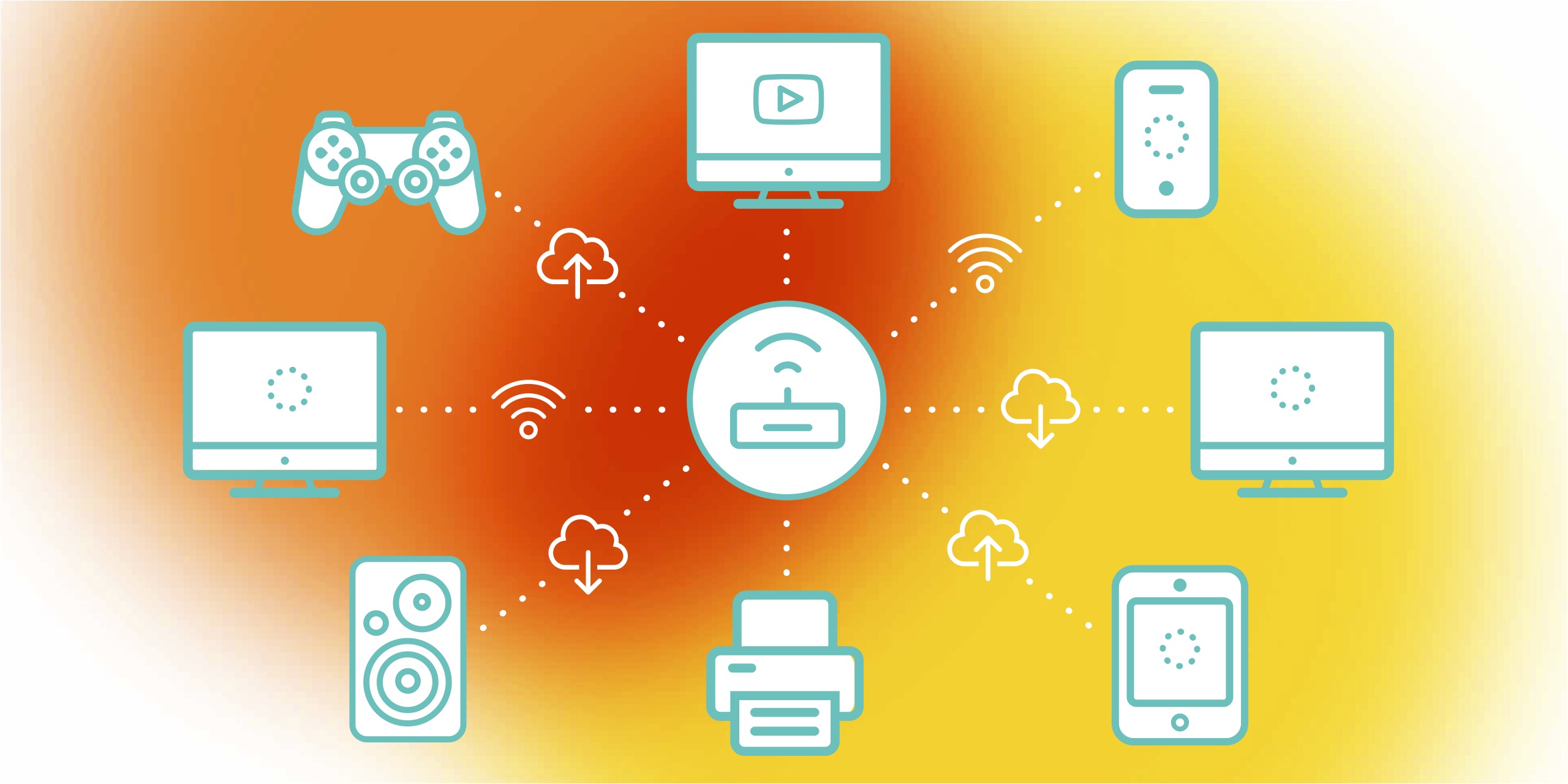Full fibre, FTTP, ultrafast… whatever you’ve heard it called, it’s the future of broadband, and for around 18% of homes in the UK that future is already here.
So what is it, why is it so great, and why is it worth the wait?
Fibre all the way
It all starts with the wires…
Traditional broadband connections use copper wires all the way from the exchange to your home. Copper is great at carrying phone calls, but when it’s used for data – as it has been for years – it can create certain problems.
For example, the strength of your signal can degrade very quickly over copper, which basically means the longer the copper wire between your home and the exchange, the slower your broadband speed.
Fibre to the cabinet (FTTC) improved this situation a great deal in the last decade by using fibre optic cable to connect the exchange to your local street cabinet. But that ‘last leg’ – the final bit of distance between the cabinet and your house – still uses copper telephone wires.
But now, full fibre ensures a fibre connection all the way to your home. That means a more robust, reliable connection delivering internet speeds of up to 900Mbps is now available.

But how much speed do I need?
If your usage is light, the answer to that question might be ‘not much’.
But consider all the things you use your broadband for today – like streaming video, downloading and playing online games, working from home or connecting all your household’s devices.
Over the next few years, 4K streaming will become the norm, most of our entertainment will be online – we might even be streaming our games too. Then there’s home working, which for many of us could become a permanent part of our lives.
And don’t forget all those smart home devices, from smart speakers to thermostats, doorbells, CCTV, alarms, sensors and more. As our homes become increasingly connected, they’ll put an ever-greater strain on our bandwidth.
And that’s the key point. This isn’t just about great speed for a single connected device. This is about more than enough bandwidth to connect all your devices smoothly. And with download and upload speeds of up to 900Mbps, Zen Full Fibre 900 Plus really does let you connect all your devices - lightning fast, super reliably – at the same time.

And more
To simply label full fibre as faster broadband would be to miss some of its other really important features.
Like its increased reliability, lower latency (great for gamers), the ability to connect hundreds of devices seamlessly and a host of other performance benefits.
Then there’s the fact that you don’t need a phone line. That means no more line rental – and when you think that old analogue phone lines will be going the way of the dodo in a couple of years, it means you’re taking great internet on your terms. If you don’t need a phone, why pay for the phone line? If you’d rather make more modern internet-based calls, full fibre provides a great platform for that too.

Worth the wait
Full fibre is probably the biggest leap forward in connectivity since the switch from dialup to broadband.
It’s built to cope with even the most demanding internet use both now and in the future. Which, in other words, means it will provide all the bandwidth you need today and probably for years to come.
When you’re looking for the absolute ultimate in a home connection, when the whole family wants to connect without compromise, when reliable home working is a must, when video calling is crucial, when you’re connecting the smart home of the future, today… well, full fibre is definitely worth the wait.


Zen Internet - Home SalesSales
01706 902573
Zen Internet - Customer EnquiriesCustomer Enquiries
01706 902001


